As practitioners of the Finding Joy – Trauma Treatment Technique™ (FJ-TTT), we help our clients calm both distress and trauma. It is important to know the difference.
For example, a young client gasped and said, “I am stressed out. Am I traumatized?” I had little doubt she was experiencing distress but needed to hear more before concluding she was living with trauma.
What is Distress?
If we are breathing, walking, and talking, we are vulnerable to moments of distress, triggered by an imagined or real threatening experience, such as a contagious virus, a burglar, or workplace layoffs. Our survival system then is triggered into the classic fight, flight, or freeze/collapse reaction.
Events that can disrupt our peace and trigger distress include:
- Domestic conflict or violence.
- Being bullied, criticized, or rejected.
- Physical, verbal, emotional, financial, or sexual abuse.
- Community violence, including home invasion.
- Natural disasters, such as floods and tornadoes.
- Disasters created by humans such as fires, and plane, train, or car crashes.
- Discrimination due to isms, such as sexism, racism, or agism.
- Medical or physical issues.
- Religious shaming and/or prejudice.
- Loss of job, home, connection, a pet, a loved one, or freedom.
- Pandemic, and its consequences of lockdowns and restrictions.
These disturbances call upon us to acknowledge them, and then make necessary changes, or accept what is. We move to safety, take deep breaths, calm our nervous system, maybe ask for help, perhaps arrange for counselling, and eventually resume our daily routines. We demonstrate resilience!
This is a simplified description of what the Canadian stress researcher, Dr. Hans Selye, described as distress. Distress is excessive stress to the point that the individual needs to employ stress management tools to resume typical functioning.
What is Trauma?
Trauma is not a disruptive event! It is the storing of the distress reaction in our nervous system (including the brain) and muscular system. Acknowledgement, processing, and self-care did not happen immediately following the event.
Since the first and second world wars, we have named this phenomenon of storing highly-charged reactions as Shell Shock and then, later, Post Traumatic Stress Disorder (PTSD). PTSD is the diagnosis of trauma when it disables people’s ability to function for significant lengths of time. In the Finding Joy – Trauma Treatment Technique™, we often assess suspected PTSD.
How Trauma Turns Up
While we typically successfully manage our distress, trauma lingers and often triggers us and impairs our functioning. Many of us live with trauma while struggling through the day. Signals that we are dealing with trauma include:
- Being pulled back to reliving the past, as in flashbacks.
- Having unaccountable thoughts, such as “I am going to die,” or “I am not safe,” or “I don’t have any choice,” or “I am bad.”
- Unexplainable behaviors such as phobias or avoidance of dogs, needles, hospitals, crowds, or certain smells, addictions, compulsive cleaning or order, self-harm, people pleasing, or being demanding and controlling.
- Triggered into the fight, flight, or freeze/collapse distress reaction with no explanation.
- Having unaccountable physical problems such as anxiety attacks, chest pain, sweating, headaches, nightmares, or irritated bowels.
The body’s effort to signal us to trauma is reflected in the titles of two well-known distress and trauma-focused books:
- Canadian physician, and childhood development and trauma expert, Gabor Maté’s, When the Body Says No: The Cost of Hidden Stress.
- Researcher, Bessel Van der Kolk’s, The Body Keeps the Score: Brain, Mind, and Body in the Healing of Trauma.
If we don’t deal with our trauma, it will halt some part of our body’s mechanisms. Hopefully, we start doing the internal exploration and healing before we are seriously mentally or physically ill.
Often clients come to counselling for a present issue, and they are surprised to discover that their concern, whether it is lack of assertiveness, anger outbursts, depression, anxiety, addiction, conflict, or other challenge, is rooted in a past unresolved issue or in childhood abuse or neglect.
Awakening to stored trauma often occurs after clients experience a Finding Joy – Trauma Treatment Technique™. We start with a client’s present awareness which often shifts into processing disturbing childhood memories.
Childhood Trauma
Here are some of the circumstances that cause unconscious storage of distress in the developing years.
- Maternal or post-partum depression.
- Physical and emotional neglect.
- Physical, emotional, and sexual abuse.
- Incarceration of a caregiver.
- Caregiver mental illness or substance abuse.
- Domestic violence and homelessness.
To learn more about childhood trauma, do a search for “Adverse Childhood Experiences Score (ACES).”
Conclusion
Awareness is the first step to healing. Whether you are experiencing distress or trauma, help is available through the Finding Joy – Trauma Treatment Technique™. Please know that we see you as not needing to be fixed but hopefully open to some internal experiencing which may give you relief from past distress or trauma. We want you to find joy!
Guest author: Patricia Morgan, MA, Canadian Certified Counsellor

